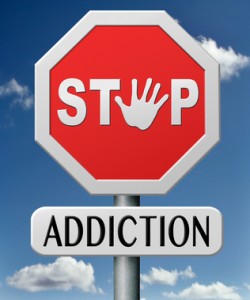The Quest for Psychiatric Dragons, Part 1

In her book, Opening Skinner’s Box, author Lauren Slater related a conversation she had with Robert Spitzer, one of the most important psychiatrists of the twentieth century. She told him of the personal struggles of another individual that Spitzer was historically linked to, David Rosenhan. Slater told Spitzer that Rosenhan’s wife had died of cancer, his daughter had died in a car crash and he was paralyzed from a disease that doctors couldn’t diagnose. She reported that Spitzer’s response was: “That’s what you get for conducting such an inquiry.”
There are questions regarding the truth of what Slater reported here. Spitzer himself said that he doesn’t remember saying that. And if he did, he meant it in a joking way. However, Slater’s observation that “Rosenhan’s study is still hated in the field [of psychiatry] after forty years” is very true. In his recently published book Shrinks, Jeffrey Lierberman, a former president of the American Psychiatric Association, described Rosenhan at the time of his infamous study as “a little-known Stanford-trained lawyer who had recently obtained a psychology degree but lacked any clinical experience.” He thought the 1973 Rosenhan study had fueled an “activist movement that sought to eliminate psychiatry entirely.” See “A Censored Story of Psychiatry” Parts 1 and 2 for more on Rosenhan’s study and Lieberman’s portrayal of it.
In 1973, the American Psychiatric Association (APA) was in crisis. Gay activists had actively protested at the annual APA meetings between 1970 and 1972, seeking to have the APA remove homosexuality as a mental disorder from the DSM. Robert Spitzer, the architect of the diagnostic revolution that was codified in the DSM-III, related in an interview that he was at a symposium on the treatment of homosexuality in 1972 that was disrupted by a group of gay activists. He recalled that in effect, the activists were saying they wanted the meeting to stop; because “You’re pathologizing us!” The media attention of the above protests created a very public embarrassment for psychiatry. Kirk et al., in Mad Science, commented:
An entire group of people labeled as mentally ill by the American Psychiatric Association was disputing its psychiatric diagnosis. At the core of their challenge was a simple, easy-to-understand question: why was homosexuality a mental illness?
Spitzer approached one of the protesters after the symposium was cancelled and their conversation led to a meeting between some of the activists and an APA committee Spitzer was a member of, the APA Task Force on Nomenclature and Statistics. Spitzer recalled that the gist of the meeting was “the idea that the only way gays could overcome civil rights discrimination was if psychiatry would acknowledge that homosexuality was not a mental illness.” After the meeting with the Nomenclature and Statistics Task Force, Spitzer proposed the APA organize a symposium at the annual APA meeting in May of 1973. He continued to be active with this issue within the APA, and was responsible for the position statement (formulated on June 7, 1973 by Spitzer) that was approved by the APA Board of Trustees in December 1973 removing homosexuality as a diagnosis from the DSM.
Concurrent with this issue was the fallout from the publication of David Rosenhan’s article in the January 1973 issue of Science, “Being Sane in Insane Places.” Kirk et al. noted that the study was intriguing, easy to understand and had striking results. So it received a lot of media attention. The study reinforced the view that psychiatric judgments were inadequate, and even laughable. “Once again, the target of the joke was the scientific pretence of psychiatric diagnosis: Psychiatrists could not distinguish the sane from the insane.”
Jeffery Lieberman, a former president of the APA and author of the book Shrinks, said that an emergency meeting of the Board of Trustees was called in February of 1973 “to consider how to address the crisis and counter the rampant criticism.” Lieberman related how the APA Board of Trustees realized the best way to deflect the “tidal wave of reproof” was to make a fundamental change in how mental illness was conceptualized and diagnosed. They agreed that the most compelling means would be to transform the DSM. By the end of the emergency meeting, the trustees had authorized the creation of the third edition of the DSM.
Lieberman said Robert Spitzer wanted to be in charge of the revision process as soon as he heard it had been approved. Spitzer recalled, “I spoke to the medical director at the APA and told him I would love to head this thing.” In part because of the way he handled the quandary over homosexuality, Spitzer was appointed to chair the DSM-III Task Force in 1974. But he had already positioned himself as an expert on psychiatric diagnosis.
I think it is fair to say that Spitzer had been aiming towards this appointment for almost seven years. His association with the DSM began in 1966, when he agreed to take notes for the DSM-II committee. Then Spitzer et al. introduced use of the kappa statistic into the literature on psychiatric diagnosis in their 1967 study, “Quantification of Agreement in Psychiatric Diagnosis.” In The Selling of the DSM, Stuart Kirk and Herb Kutchins commented that the introduction of kappa appeared to provide a way to unify the comparison of reliability studies, while eliminating the statistical problem chance agreement at the same time. Joseph Fliess, who would later co-author with Spitzer their seminal 1974 study, was one of the authors here.
Before the Rosenhan study in 1973, Spitzer and others had already published several articles related to revising psychiatric diagnosis in the Archives of General Psychiatry: “Immediately Available Record of Mental Status Exam” (July, 1965); “Mental Status Schedule” (April 1967); “Quantification of Agreement in Psychiatric Diagnosis: A New Approach” (July, 1967); “DIAGNO: A Computer Program for Psychiatric Diagnosis Utilizing the Differential Diagnostic Procedure” (June, 1968); “The Psychiatric Status Schedule” (July, 1970); “Quantification of Agreement in Multiple Psychiatric Diagnosis” (February, 1972). And these were just those published in the Archives.
In 1971 Spitzer was introduced to a group of psychiatric researchers from Washington University in St. Louis. They were working to develop diagnostic criteria for specific mental disorders. Spitzer was in heaven. Lieberman reported Spitzer said: “It was like I had finally awoken from a spell. Finally, a rational way to approach diagnosis other than the nebulous psychoanalytical definitions in the DSM-II.” According to Whitaker and Cosgrove in Psychiatry Under the Influence, more than half of the members Spitzer appointed to the DSM-III Task Force had an existing or past affiliation with Washington University.
Feighner et al., the group of researchers at Washington University in St. Louis, published “Diagnostic Criteria for Use in Psychiatric Research” in 1972. They proposed specific diagnostic criteria for 14 psychiatric disorders, along with the validating evidence for those criteria. Kirk and Kutchins said their work became known as the Feighner criteria, after its senior author. This study became a classic in the psychiatric literature, and has been cited over 4,000 times since its publication.
In 1978, Spitzer and others would use the Feighner criteria to produce the “Research Diagnostic Criteria” (RDC), another significant step in the formation of the DSM-III. Kirk and Kutchins said: “These two articles … and the work on which they were based are among the most influential developments in psychiatry” since the late 1960s. An important fact in both the Feighner criteria and Spitzer’s RDC, was they were initially developed only for use in research. “Neither article proposed that the elaborate diagnostic systems be adopted by clinical psychiatrists.” That came later. But you can see the path that Spitzer had been walking since 1967. He wanted to radically change psychiatric diagnosis and had been methodically moving in that direction. And then the Rosenhan study, “Being Sane in Insane Places” was published in the journal Science.

